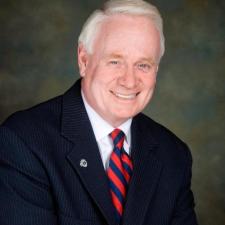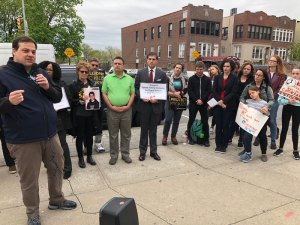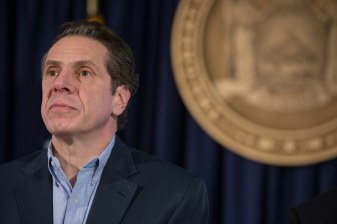Brooklyn Senator Marty Golden Lobbies Against Life-Saving Speed Cameras
State Senator Marty Golden and the Patrolmen’s Benevolent Association are working to keep life-saving speed enforcement cameras out of NYC.

A demonstration program with a handful of cameras was included in the State Assembly budget, and has the support of Mayor Bloomberg, the City Council and NYPD Commissioner Ray Kelly. City leaders and street safety advocates have worked years to get the program this far, but Golden — a former cop — and the police union are lobbying Albany lawmakers to kill it.
“Speed cameras are no substitute for live policing,” said PBA President Patrick Lynch, to the Daily News.
He said the cameras would allow drivers who are drunk, carrying weapons and fleeing crimes to “slip by.”
Said Golden: “What we need are the actual police officers on the street. Cops on the street are what slows people down.”
But according to Kelly, streets will be safer with speed cameras. “Motorists know that there will never be a sufficient number of police officers to catch everyone who violates the traffic laws,” said Kelly, in a recent letter to Governor Cuomo, “but the presence of speed cameras can create a strong deterrent effect, serving to reduce speeding and the collision and physical injury that it causes.”
NYPD traffic enforcement is on the decline. Officers issued as few as 19,119 summonses for speeding on neighborhood streets in 2012, and the overall number of traffic citations was down 20 percent from 2008.
In four precincts encompassed by Golden’s south Brooklyn district — the 61st, 62nd, 63rd, and 68th — officers wrote a total of 507 speeding tickets last year, according to NYPD. That’s less than two motorists caught speeding per day in Bay Ridge, Dyker Heights, and parts of Sheepshead Bay, Gravesend, and Marine Park combined. With 39 percent of motorists speeding on city streets, that equates to practically zero enforcement.
Speeding was cited as a factor in 55 of 250 fatal NYC crashes last year, according to the state Department of Motor Vehicles. Crash data compiled by Streetsblog show that since January 2012 at least five pedestrians have been killed by motorists in the precincts in Golden’s district. One of the victims was a child, and two were seniors. Another victim, Chenugor Dao, died when two drivers collided in Gravesend, sending one vehicle onto the sidewalk, where Dao was standing with family members.
Traffic cameras are highly effective at reducing speeding, red light-running, and crashes. They pay for themselves. Unlike police officers, they don’t care who the speeding motorist is. Most important, they don’t get reassigned to other enforcement tasks.
There is no guarantee that more police would bring more traffic enforcement. Case in point: Current NYPD enforcement priorities rank tinted windows above speeding.
Ideally, drivers would obey the law to the extent that cops on the street would be enough. But that’s not reality — and Golden, at least, knows it. Otherwise, rather than try to toughen penalties for hit-and-run, he would just push for more cops, on the premise that all hit-and-runs could be prevented by increasing police presence.
This is not a choice between cops and cameras. It’s a choice between offering city pedestrians, cyclists, and vehicle occupants a measure of protection from speeding drivers, or allowing deadly behavior behind the wheel to go virtually unchecked.


